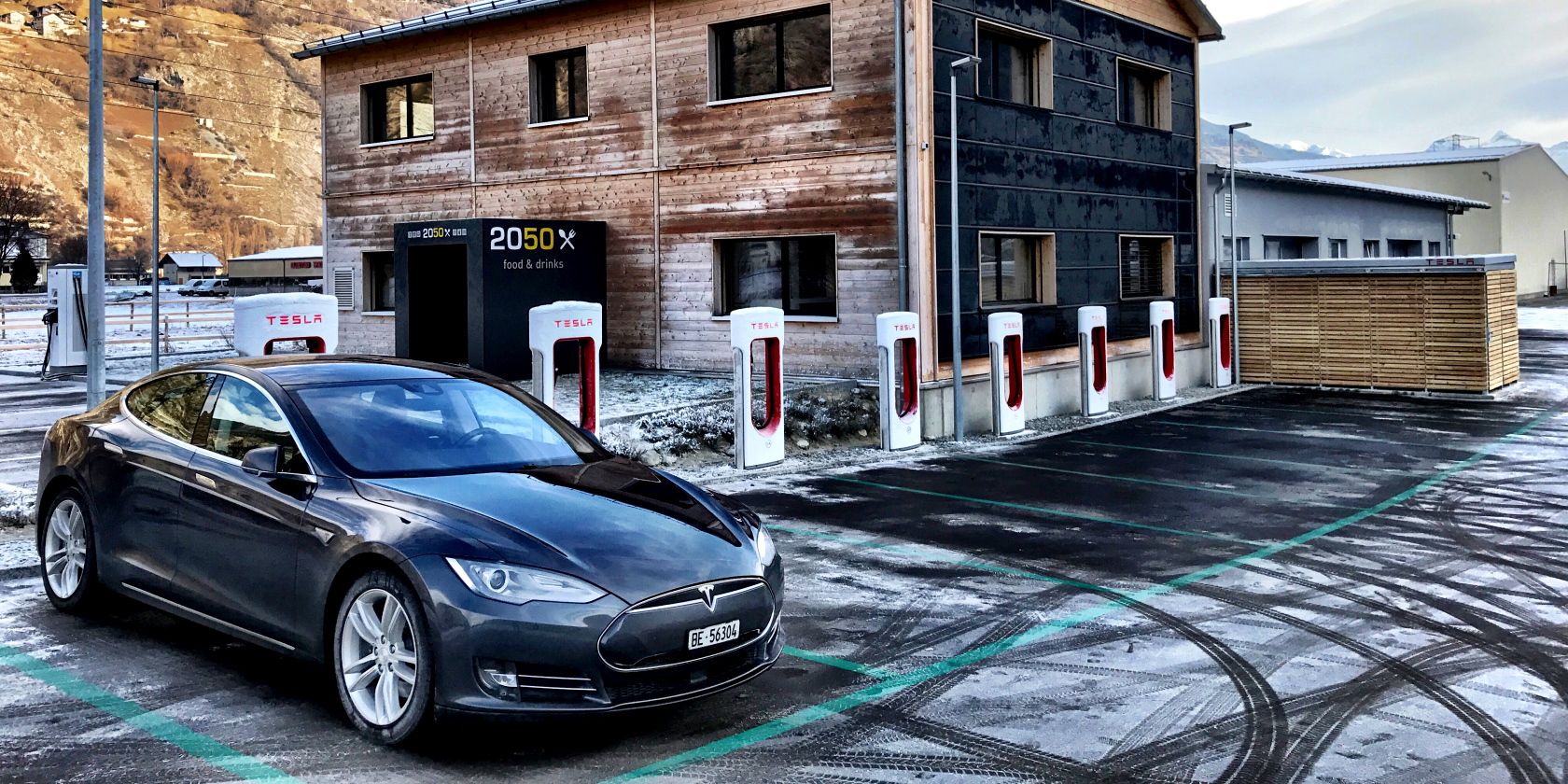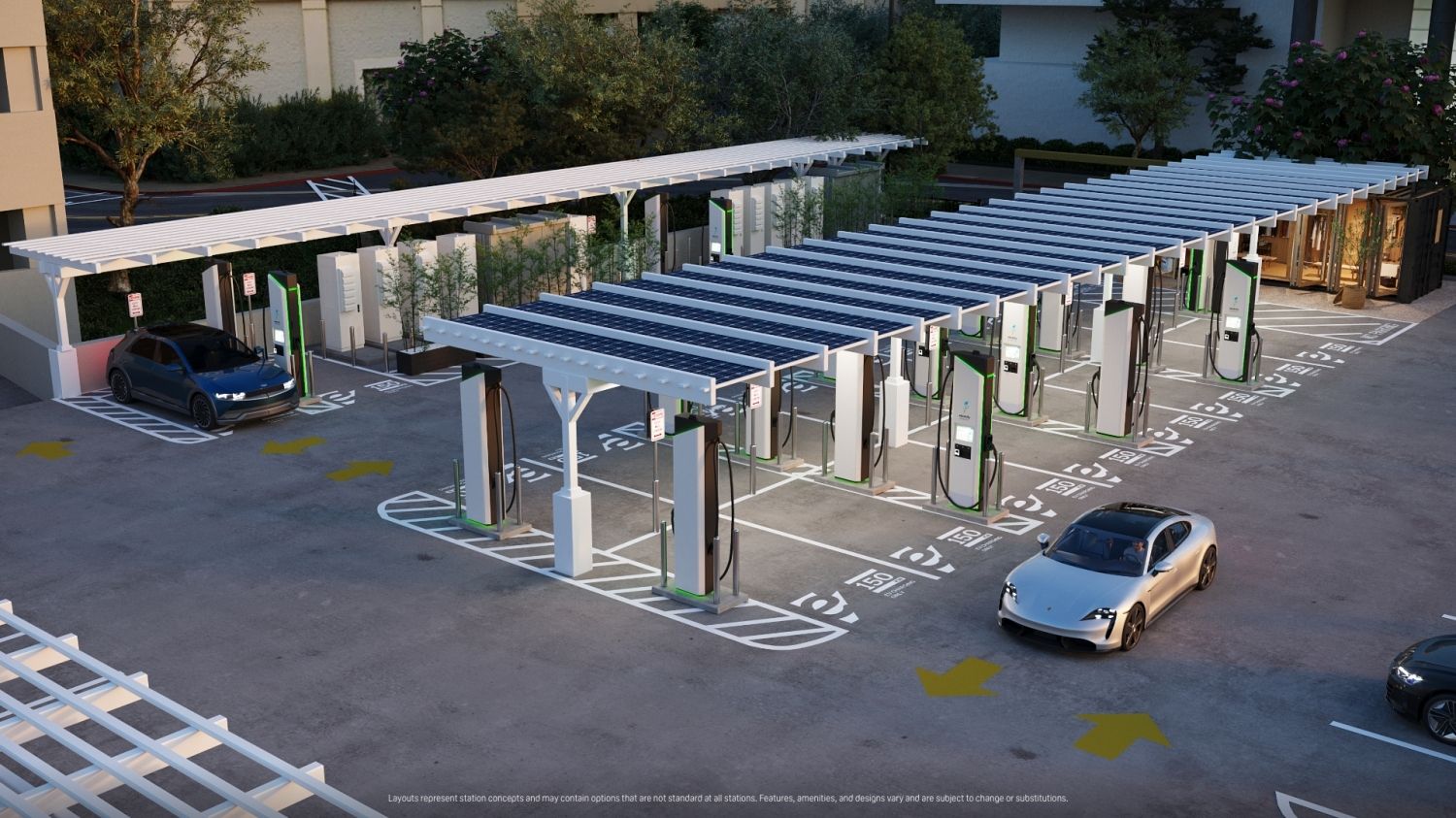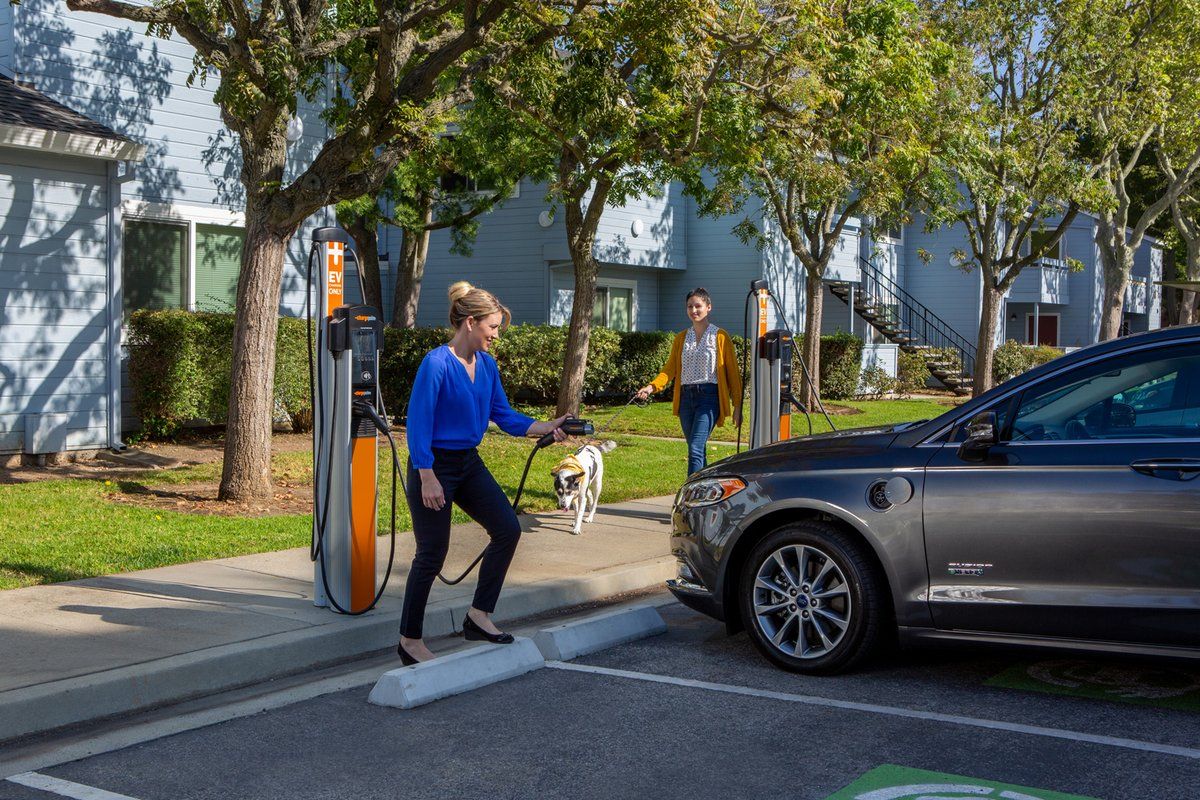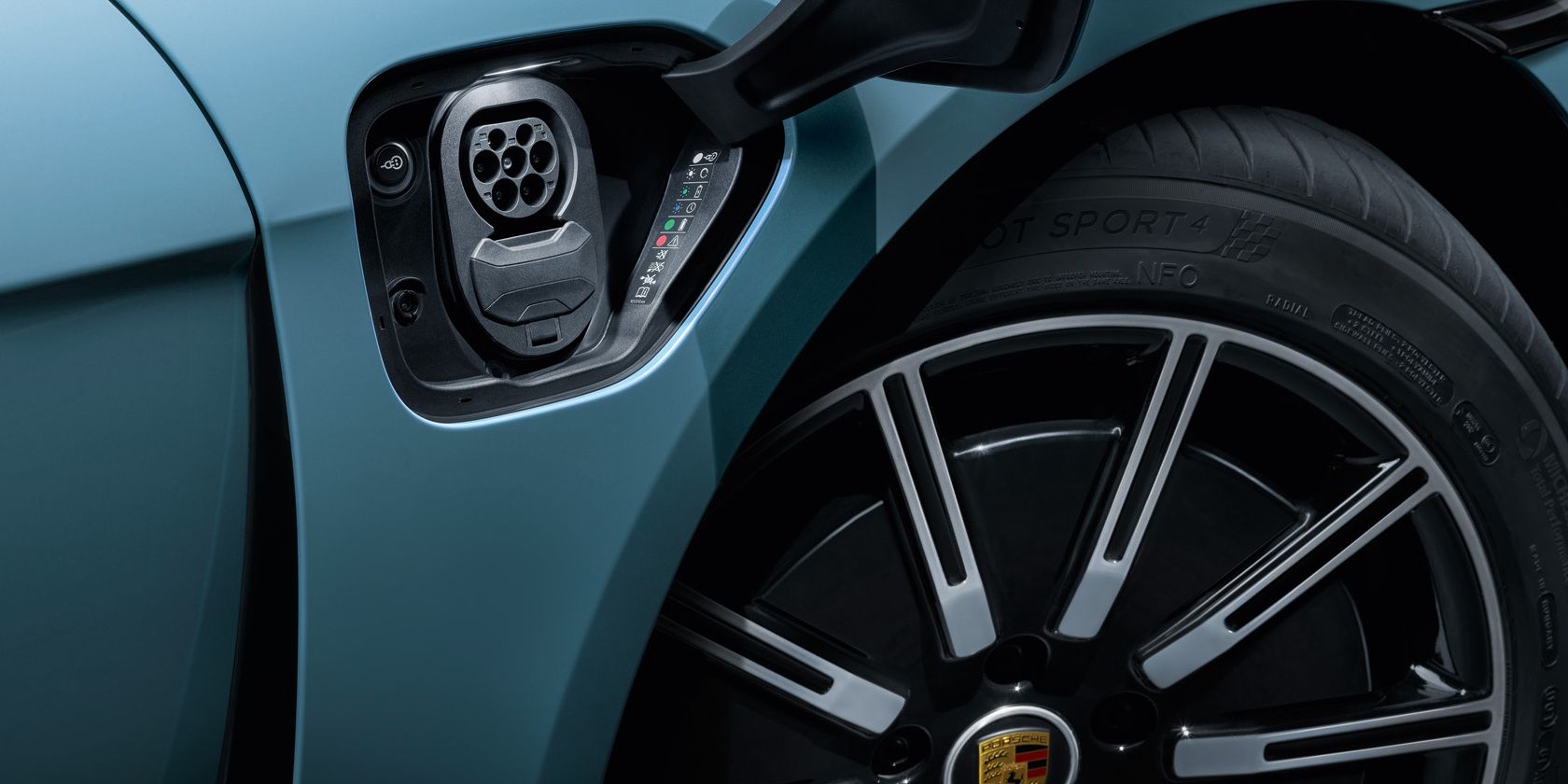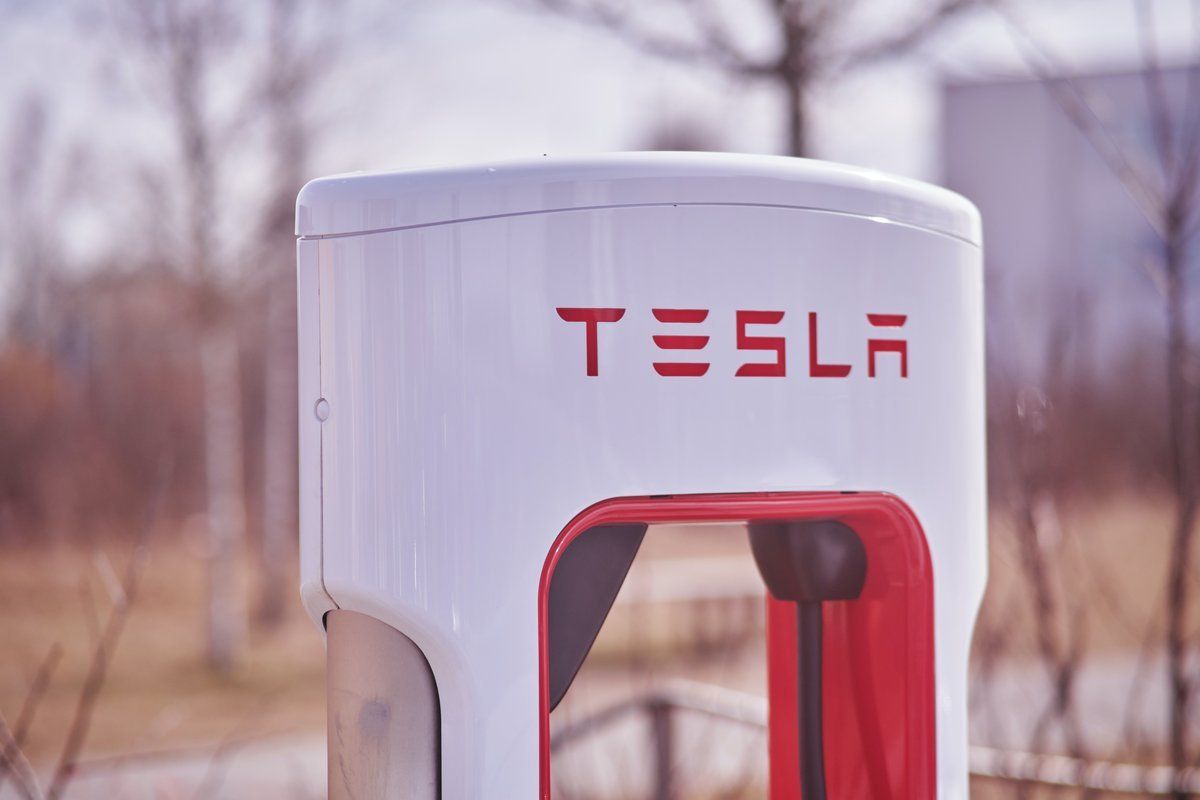Electric vehicle charging infrastructure was one of the biggest roadblocks to massive EV adoption. But, as of late, charging networks have markedly improved the charging infrastructure in the US.
Now that it’s feasible to charge your EV around the nation, and long road trips are no longer scary, the charging networks are initiating a charging speed arms race. All the major charging networks offer fast charging, but which one is king?
Tesla Supercharger Network
Tesla is the current king of performance EVs and offers some of the best high-performance electric cars on the market, and it’s earned that place at the top by constantly innovating and offering better products than the competition.
The Supercharger network is one of the most comprehensive electric charging networks in the world, and if you own a Tesla vehicle, you don’t need to look anywhere else to charge your car.
Charging your Tesla EV with a Supercharger is seamless and works perfectly with your vehicle. The ecosystem that Tesla has built around its electric cars is very reminiscent of what Apple has been able to accomplish with its range of products.
The Supercharger network also offers fast charging rates, with 250 kW available as the maximum rate. According to Tesla’s Supercharger site, you can recover up to 200 miles of driving range by charging for a measly 15 minutes.
The great thing is that your Tesla will automatically precondition the battery if you navigate to a Supercharger to make charging even faster. 250 kW is definitely impressive, but it doesn’t take top honors because there are even faster-charging solutions out there.
Electrify America Network
Electrify America is Volkswagen’s Supercharger competitor, partnering with tons of automakers to bring free charging for customers. The free charging incentive of Electrify America provides a great reason to buy an EV at the moment, and it’s probably convincing a lot of potential customers that might have been on the fence. In terms of overall charging speed, the Electrify America network offers blistering charge rates of up to 350 kW.
Of course, it’s important to note that your EV must be compatible with these insane charging rates. Otherwise, your actual rate will be capped at whatever your electric car can accept. Regardless, if you have a vehicle that can take advantage of the full charging rate Electrify America offers, you’ll be able to fill up your EV in no time.
One of the best free charging plans currently available is the one Hyundai offers with Electrify America for its IONIQ 5 EV. This incentive includes two years of free charging as long as the sessions are no longer than 30 minutes.
This is one of the biggest perks that separates Electrify America from the competition—their partnerships are extensive and generous. Buying a new EV and replenishing its battery free of charge is a major win.
This is especially useful because of the awesome charging speeds Electrify America offers, as well as the fact that the network is growing every day. If you’re constantly on the road, buying a vehicle with an Electrify America charging bonus might be a great investment.
ChargePoint
ChargePoint sells its charging stations to businesses, so these private buyers are essential to the network’s growth. This business model is interesting, and it allows the network to grow at a rapid pace.
ChargePoint also makes home chargers for EV owners that want an L2 solution for their home. In terms of charging rate, ChargePoint offers chargers that can supply power anywhere from 125kW all the way to 350kW.
Investing in a ChargePoint station might be a great option if you’re a business owner and want to stay ahead of the curve. This is especially true if you want to diversify your customer base. Companies like ChargePoint might actually accelerate the adoption of charging stations in more isolated areas faster than bigger networks like Electrify America.
EVgo
EVgo offers charging stations that can charge your EV at a rate of 50kW on the low end and a whopping 350kW at the top end. This is definitely ultra-fast, although, at the moment, the number of EVs that can take advantage of these ludicrous charging speeds is quite limited.
The incredible Lucid Air EV is among the select few EVs that can come close to taking advantage of the full 350kW rate. This shouldn’t be a problem, though, as it’s almost guaranteed that more and more carmakers will continue to install faster-charging capabilities in future EVs.
It seems most electric vehicle charging networks are offering 350kW solutions for their customers, so it will be interesting to see how long it takes Tesla to offer a faster charging option for its customer base.
Volta
Volta is one of the most innovative charging networks out there, with charging stations that double as massive screens showing ads. Volta offers L2 charging as well as L3 charging solutions. However, don’t expect blazing charging speeds if you’re looking to fast charge your EV at a Volta station. According to Volta’s FAQ page, its L3 chargers aren’t exactly the fastest around.
DC Fast Charging Speed: 50-60 kWh, or up to 210 miles of range per hour depending on your EV.
Speeds like this don’t really compare to the other charging networks, but Volta does offer a unique business model, and you might even be lucky enough to find a free L3 Volta charger if you spend enough time on the app.
With Volta, their game isn’t about offering the fastest speeds, especially when they offer free L2 charging, which is a huge selling point for their advertising business. Imagine going shopping and being able to leave your vehicle charging at an L2 Volta charger while you roam the mall. What does Volta want in return? Only that you stare at some of the ads plastered on its digital billboard.
This definitely seems like a fair tradeoff; the only concern is how sustainable this business model ultimately proves to be. In an ideal world, Volta would make all of its L3 chargers free to use, but this doesn’t seem sustainable with its current advertising revenue scheme.
Which EV Charging Network Is the Fastest?
Most of the charging networks on this list offer DC fast charging up to 350 kW, the notable exceptions being Tesla and Volta. So, in terms of raw speed, the competition has Tesla beat.
But, according to the US Department of Energy’s Alternative Fuels Data Center site, Tesla has 1,585 DC fast charging station locations and 16,785 Electric Vehicle Supply Equipment (EVSE) ports. Comparing this to Electrify America with its 822 locations and 3,576 ports, you’ll quickly realize how vast Tesla’s network is.
ChargePoint is also far behind, with 1,781 locations and 1,781 EVSE charging ports. So while some competitors offer faster charging rates, Tesla makes up for it by providing its customer base with a vast amount of DC fast chargers.
Fast Charging Is More Important Than Ever
Getting an EV charged quickly is a huge priority for many people, especially if your job depends on constant highway travel. Charging networks know this, and the competition is heating up in terms of who can offer the fastest charging rates. At the moment, the only limiting factor is the vehicles themselves, but once this is overcome, ultra-fast charging should be very commonplace.

